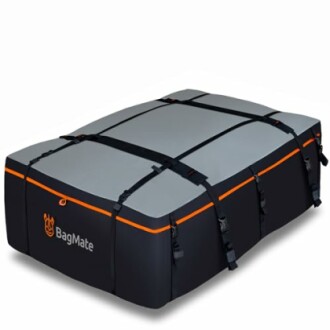
Understanding the Weight Limits of Your Roof Rack
Key Takeaways
- The weight limit of your roof rack is determined by manufacturer specifications and should never be exceeded.
- Safe loading practices include distributing weight evenly and securing items to prevent shifting during travel.
- Always consider both the rack's limit and your vehicle's overall roof load capacity.
- Regular inspections of the roof rack for wear and tear can prevent accidents and enhance safety.
- Utilize resources like our guides on roof racks and boxes or soft-shell carriers to find suitable gear.
Understanding the weight limits of your roof rack is essential for ensuring safe travel and longevity of both your vehicle and the equipment you carry. In this article, we explore how to calculate those limits, what factors to consider, and how to load your roof rack safely and efficiently.
Calculating Weight Limits
The first step in adhering to safe weight limits is knowing how to calculate them. Roof rack weight limits are typically determined by the manufacturer, and it’s crucial to check both the rack’s specifications and your vehicle’s overall capacity.
Steps to Calculate Weight Limits
- Check Manufacturer Ratings: Consult the roof rack's manual or the manufacturer's website for specific weight limits.
- Consider Vehicle Limitations: Look up your vehicle’s roof load limit in the owner’s manual or manufacturer’s website.
- Sum of Equipment Weight: Add up the weight of all items you intend to carry, including the roof rack itself.
Weight Distribution
How you load your roof rack can significantly impact stability. Improper weight distribution can lead to unsafe driving conditions.
Best Practices for Weight Distribution
- Centering the Load: Position heavier items in the center of the rack to maintain balance.
- Securing Items: Use straps, tie-downs, or netting to prevent items from shifting during transit.
- Spreading Weight Evenly: Distribute weight over the width of the rack to minimize sway and maximize safety.
Common Weight Limits for Roof Racks
| Rack Type | Typical Weight Limit | Best Suited For |
|---|---|---|
| Factory Roof Racks | 150-200 lbs | Light gear like luggage or kayaks |
| Aftermarket Crossbars | 200-250 lbs | More substantial cargo like bikes or larger cargo bags |
| Heavy-Duty Racks | 300 lbs and above | Commercial uses or multiple heavy items |
Product Spotlight: Heavy-Duty Waterproof Roof Bag
Need extra space for your adventures? Check out the Heavy-Duty Waterproof Roof Bag by BagMate. This 23 cubic feet roof bag can hold up to 8 suitcases, making it ideal for road trips.
Heavy-Duty Waterproof Roof Bag
A spacious and versatile roof bag designed for durability and reliability, ensuring your belongings stay safe during every journey.
Learn MoreInspecting Your Roof Rack
Regular inspections are a vital part of ensuring your roof rack remains safe and functional. Here are some tips for what to look for:
Inspection Checklist
- Look for cracks or wear in the rack frame.
- Check that all straps and mounting hardware are secure and intact.
- Examine the roof of your vehicle for scratches or dents.
Final Thoughts
Understanding the weight limits of your roof rack and following safe loading practices will greatly enhance your travel experiences. For more information, visit our resources on cargo racks and towing accessories to ensure you are fully equipped for your adventures.
Tips for Beginners
- Always start with lighter items when loading your roof rack to practice safe loading techniques.
- Consult vehicle manuals and product descriptions for specific guidance on limitations.
- Don’t overload your roof rack beyond its rated limit.

